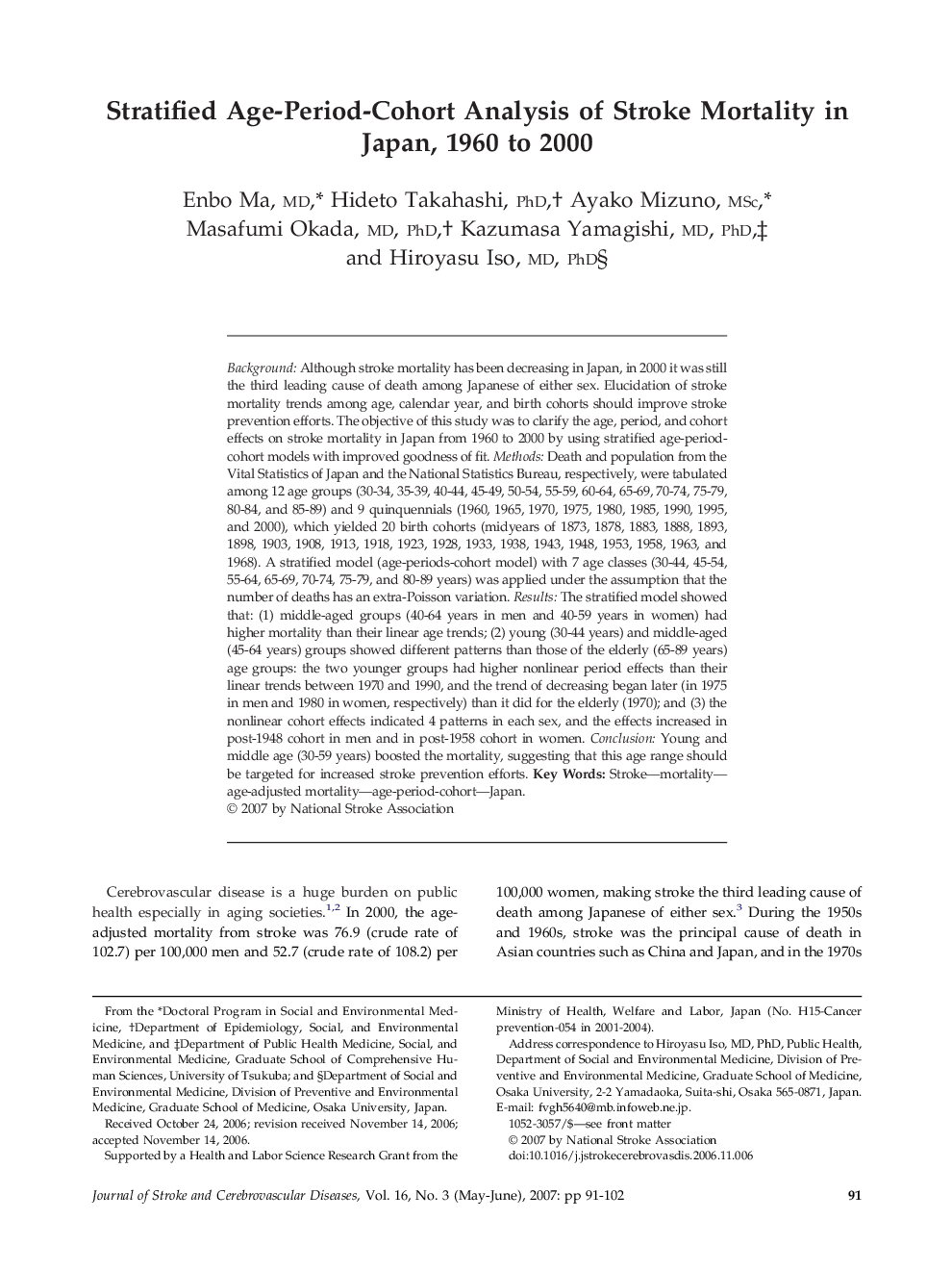| کد مقاله | کد نشریه | سال انتشار | مقاله انگلیسی | نسخه تمام متن |
|---|---|---|---|---|
| 2703186 | 1144580 | 2007 | 12 صفحه PDF | دانلود رایگان |

Background: Although stroke mortality has been decreasing in Japan, in 2000 it was still the third leading cause of death among Japanese of either sex. Elucidation of stroke mortality trends among age, calendar year, and birth cohorts should improve stroke prevention efforts. The objective of this study was to clarify the age, period, and cohort effects on stroke mortality in Japan from 1960 to 2000 by using stratified age-period-cohort models with improved goodness of fit. Methods: Death and population from the Vital Statistics of Japan and the National Statistics Bureau, respectively, were tabulated among 12 age groups (30-34, 35-39, 40-44, 45-49, 50-54, 55-59, 60-64, 65-69, 70-74, 75-79, 80-84, and 85-89) and 9 quinquennials (1960, 1965, 1970, 1975, 1980, 1985, 1990, 1995, and 2000), which yielded 20 birth cohorts (midyears of 1873, 1878, 1883, 1888, 1893, 1898, 1903, 1908, 1913, 1918, 1923, 1928, 1933, 1938, 1943, 1948, 1953, 1958, 1963, and 1968). A stratified model (age-periods-cohort model) with 7 age classes (30-44, 45-54, 55-64, 65-69, 70-74, 75-79, and 80-89 years) was applied under the assumption that the number of deaths has an extra-Poisson variation. Results: The stratified model showed that: (1) middle-aged groups (40-64 years in men and 40-59 years in women) had higher mortality than their linear age trends; (2) young (30-44 years) and middle-aged (45-64 years) groups showed different patterns than those of the elderly (65-89 years) age groups: the two younger groups had higher nonlinear period effects than their linear trends between 1970 and 1990, and the trend of decreasing began later (in 1975 in men and 1980 in women, respectively) than it did for the elderly (1970); and (3) the nonlinear cohort effects indicated 4 patterns in each sex, and the effects increased in post-1948 cohort in men and in post-1958 cohort in women. Conclusion: Young and middle age (30-59 years) boosted the mortality, suggesting that this age range should be targeted for increased stroke prevention efforts.
Journal: Journal of Stroke and Cerebrovascular Diseases - Volume 16, Issue 3, May–June 2007, Pages 91–102